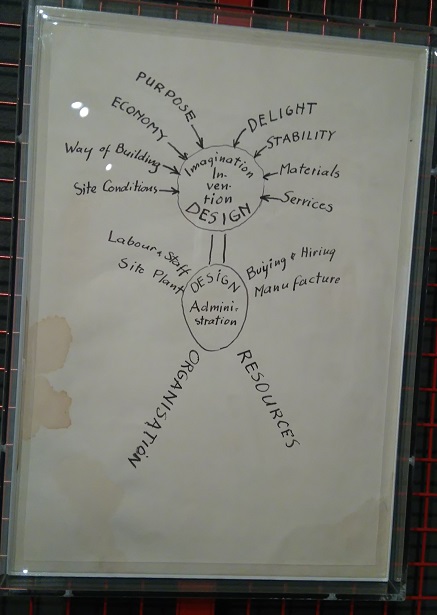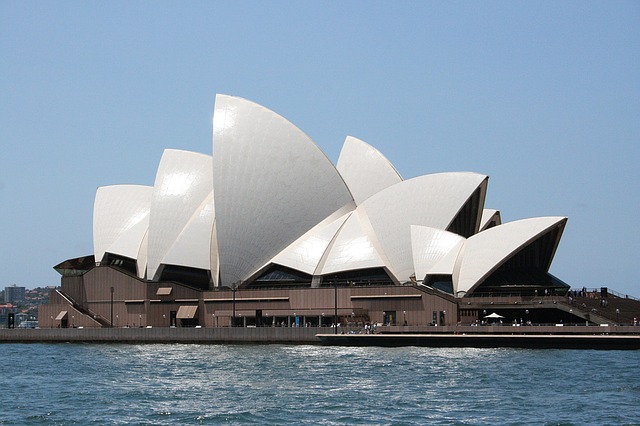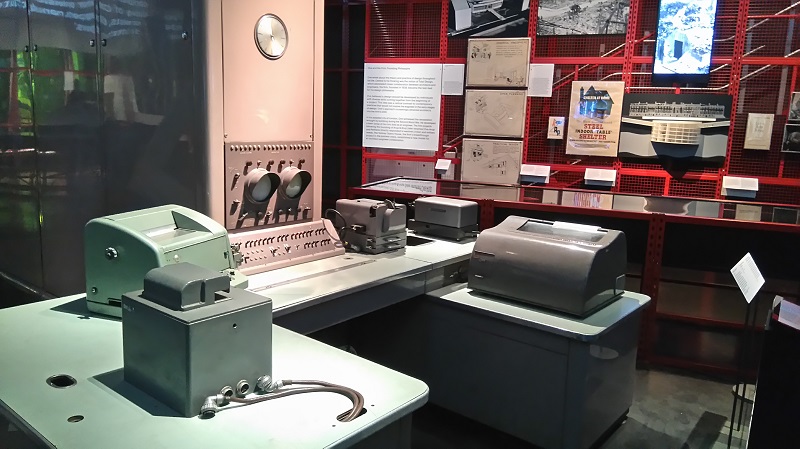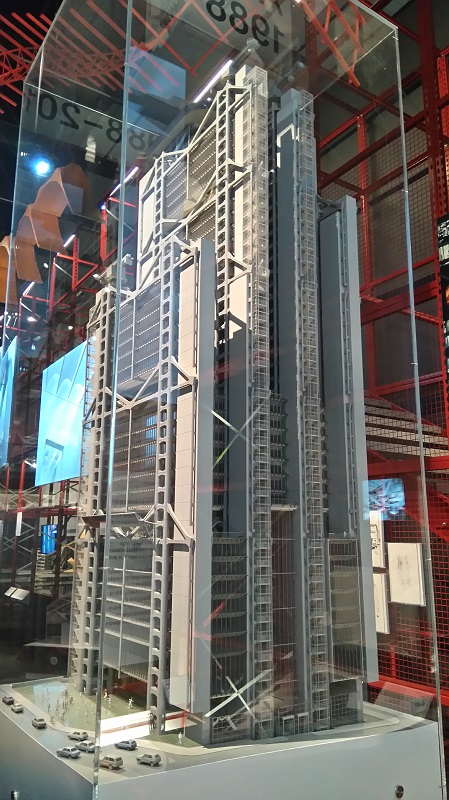Main author
Michael BrooksEngineering the World - VandA Museum
On 27 July 2016, Designing Buildings Wiki went along to the Victoria & Albert Museum in South Kensington, London, to have a look round the headline exhibition of their current Engineering Season, ‘Engineering the World: Ove Arup and the Philosophy of Total Design’.
The exhibition is dedicated to the work of the Ove Arup (1895-1988), one of the most influential engineers and designers of the 20th century.
Near the entrance to the exhibition, there is a framed coffee-stained doodle by Arup (see below) of a cartoon figure with labels such as ‘Delight’, ‘Purpose’, ‘Organisation’, and ‘Site Conditions’, that capture the essence of his pioneering ideas about what the modern engineer should encapsulate.
This became formulated as the concept of Total Design, which meant to ‘join all the professions right from the start’; redefining the way architects, designers and engineers collaborated on projects.
The exhibition includes Arup’s radical designs for improving inadequate air raid shelters during the Second World War, as well as his work on the Mulberry temporary harbours, built to facilitate the rapid offloading of soldiers and cargo, and deployed during the 1944 D-Day landings.
There are also detailed calculation sheets used for the construction of the iconic gravity-defying spiraling concrete ramps for the Penguin Pool at London Zoo; a project which established Arup as a leading consulting engineer.
As interesting as this early insight into Arup’s work is, it is overshadowed by the centrepiece of the exhibition - Arup’s most famous project, the Sydney Opera House.
The exhibition presents models and original sketches that document the journey from concept to structural design to built reality. Also of interest is the grainy 16 mm film footage of a scale model of the Opera House undergoing wind tunnel testing at Teddington’s National Physical Laboratory in 1961.
Of particular note, is the original Pegasus Mark 1 (see below), the first computer to be used for calculations on a building project. This emphasises the epoch-changing time of the mid-20th century of which Arup was a leading figure, the increasing computerisation of industries that appeared to offer a brave new world of technological innovation where anything was achievable.
In the case of the Sydney Opera House, it was the realisation of a structure that had previously been considered ‘impossible to build’.
The exhibition also examines how Arup’s Total Design concept inspired other landmarks buildings of the new high-tech form, most notably the Centre Pompidou by Richard Rogers, and the HSBC Hong Kong Building by Norman Foster (see 1:100 scale model below).
Interestingly, the entire exhibition space itself is contained within a 1:1 scale model of the Centre Pompidou’s garberette beam which made possible the building’s most distinctive design feature – external utilities and services.
Engineering students and professionals should take the opportunity to visit this unique and engaging exhibition, providing as it does a fascinating retrospective of one of the built environment’s most influential and philosophical figures.
‘Engineering the World’ runs at the Victoria & Albert Museum in London until 6 November 2016.
For more information, see V&A.
[edit] Find out more
[edit] Related articles on Designing Buildings Wiki
- 7 Engineering Wonders of the world.
- Bridge Engineering exhibition.
- Burj al Arab, Dubai.
- Centre Pompidou.
- Concept architectural design.
- Dunelm House, Durham.
- Imagine Moscow exhibition.
- RSHP.
- Shell roof.
- Structural engineer.
- Sydney Opera House.
- The history of fabric structures.
- The Japanese House: Architecture and Life after 1945.
Featured articles and news
Latest Build UK Building Safety Regime explainer published
Key elements in one short, now updated document.
UKGBC launch the UK Climate Resilience Roadmap
First guidance of its kind on direct climate impacts for the built environment and how it can adapt.
CLC Health, Safety and Wellbeing Strategy 2025
Launched by the Minister for Industry to look at fatalities on site, improving mental health and other issues.
One of the most impressive Victorian architects. Book review.
Common Assessment Standard now with building safety
New CAS update now includes mandatory building safety questions.
RTPI leader to become new CIOB Chief Executive Officer
Dr Victoria Hills MRTPI, FICE to take over after Caroline Gumble’s departure.
Social and affordable housing, a long term plan for delivery
The “Delivering a Decade of Renewal for Social and Affordable Housing” strategy sets out future path.
A change to adoptive architecture
Effects of global weather warming on architectural detailing, material choice and human interaction.
The proposed publicly owned and backed subsidiary of Homes England, to facilitate new homes.
How big is the problem and what can we do to mitigate the effects?
Overheating guidance and tools for building designers
A number of cool guides to help with the heat.
The UK's Modern Industrial Strategy: A 10 year plan
Previous consultation criticism, current key elements and general support with some persisting reservations.
Building Safety Regulator reforms
New roles, new staff and a new fast track service pave the way for a single construction regulator.
Architectural Technologist CPDs and Communications
CIAT CPD… and how you can do it!
Cooling centres and cool spaces
Managing extreme heat in cities by directing the public to places for heat stress relief and water sources.
Winter gardens: A brief history and warm variations
Extending the season with glass in different forms and terms.
Restoring Great Yarmouth's Winter Gardens
Transforming one of the least sustainable constructions imaginable.




























